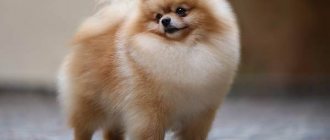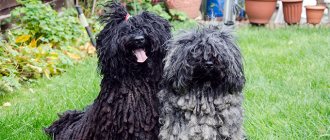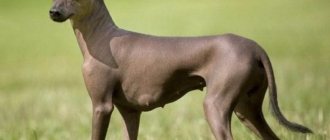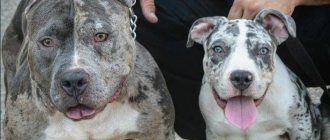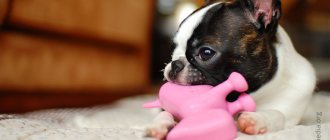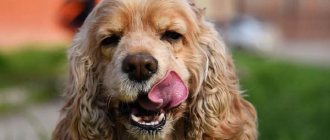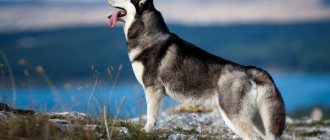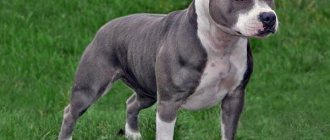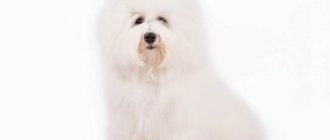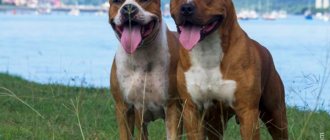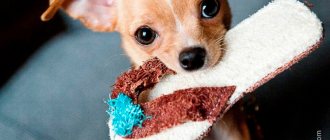Today there are more than four hundred different breeds of dogs in the world. The authoritative canine association FCI has officially registered only 344 of them. About forty varieties are considered poorly studied and, as a result, unrecognized.
Some individuals, in turn, are classified as rare specimens.
It is worth noting that there are several objective reasons why a pet may be included in the exclusive list. This:
- Habitat in a specific region.
- Low worldwide distribution.
- The threat of animal extinction.
- Little interest among dog handlers.
- Difficulty in breeding.
- High price.
We invite you to get to know fourteen amazing and rarest breeds of “tailed family members”.
Rating:
- Bergamasco Shepherd
- Barbet
- American Hairless Terrier
- Otterhound
- Russian toy terrier
- Bedlington Terrier
- Lancashire Heeler
- Finnish Spitz
- Tibetan mastiff
- Azawakh
- Moody
- Leonberger
- Bearded Collie
- Belgian Griffon
Xoloitzcuintle or Xolo
This breed is considered a state treasure in Mexico. The name, no less outlandish than the dog itself, comes from the language of the Mexican Indians, often pronounced differently: sholoitzcuintle or sholo. In the Nahuatl language, the name of the dog reveals the divine origin of the animal: “dog of the god Xolotl.”
The Mexican Hairless Dog (this is another name for it) is considered the oldest breed. Their mummified bodies are found in the tombs of the Mayans, Aztecs, and Zapotecs. Burials, drawings and figurines of hairless dogs are over 3,500 years old. Canine standards describe three sizes of dogs:
- large, height from floor to withers 60 cm;
- average, height up to 45 cm;
- small, height up to 35 cm.
Xolo is a slender, hairless dog. Her features include almond-shaped, slightly protruding eyes; big ears a la “bat”; long neck. Body hairlessness is not an absolute sign. One litter may contain hairless and furred puppies. The coated Xolo is believed to be the original version of the Xoloitzcuintle dog breed.
Bedlington Terrier
Small dogs bred in Britain. Height rarely exceeds 42 cm, weight - 9.5 kg. The breed inherited its name from the English mining town of Bedlington. The fronts of today's dogs have mastered different professions. They caught rodents, participated in dog competitions, hunted, and worked as companions.
Thanks to the active ancestors, the result was a versatile dog with a stable psyche and non-aggressive character. The dog's appearance is extraordinary. She looks like a small, young ewe, a lamb. The dog's head is pear-shaped, there are no sharp transitions. The ears are medium sized, drooping. The fur is thick and soft. Nowadays, Bedlingtons work only as companions.
Telomian
The dog comes from Malaysia, where it was used as a guard and hunter of rodents and snakes. It is believed to have descended from the wild dog dingo. World history began in the 1970s, when a tribal leader presented a Telomian boy and a girl to the US ambassadors.
It’s difficult to talk about breed standards; many cynological organizations have not recognized it. Height usually does not exceed 46 cm, weight reaches 20 kg. There are dogs with black, black-and-white and brown-white fur.
Telomians did not find popularity in Europe and America. They are little studied and practically uncontrolled, so purebred puppies are a rarity.
Bergamasco Shepherd
This breed has a second name - Bergamasco. The breed and its name originated in the Italian Alps, near Bergamo. In these places, dogs herded sheep. Modern genetic studies have shown that many European herding breeds, including the German Shepherd, descended from the Bergamasco.
The Bergamasco is a large-headed, muscular, strong-boned herding dog. Males often reach 62 cm at the withers and gain weight up to 37 kg. Bitches are somewhat lower and lighter. The animals are covered with long hair that gathers in flat tangles. Dogs of this breed have not changed their calling. They remained hardy, unpretentious shepherds. They seemed completely unsuited to life among closets and sofas.
Bonus: Australian bobtail heeler
This breed is also known as the Australian Short-tailed Cattle Dog and we couldn't help but include it on our list. The blood of Australian dingoes, English Smithfields and marbled smooth collies runs through their veins. As a result, representatives of the newly created breed received amazing color, character and abilities.
The Australian bobtail heeler is extremely hardy and intelligent - it is a versatile herding dog. They practically do not bark, and to control animals they bite their hind limbs, after which they bend down, avoiding a retaliatory kick. For this feature the breed got its name, from the English “heels” - “heels”, that is, literally translated - “heel”.
Today the breed numbers about four thousand individuals, but you will hardly find them outside of Australia. It's all about the peculiarities of upbringing - dingo blood makes heelers distrustful and requiring especially careful training, so breeders simply do not give the dogs to amateurs.
Representatives of all the breeds described above have several characteristic features in common: these are representatives of old breeds, in the past they performed important functions for humans, they require experience and skills in training. In addition, they are not popularized through the media. For example, the film adaptation of Hachiko’s story increased the popularity of the Akita Inu breed by about 100 thousand times. The situation is similar with breeds of “pocket” dogs. We can only hope that the breeds described in this material will also gain popularity and will multiply, delighting their owners with intelligence, skills and independence.
Belgian small dogs
Three very rare breeds of small dogs have been united into one section by the cynological association FCI. The differences between the breeds are small - the color and quality of the coat. They are often considered three versions of the same breed.
- The Brussels Griffon has thick, medium-length fur in red tones.
- The Belgian Griffon is a wire-haired variety. Regular color is black.
- The Petit Brabançon is covered with short, black and red hair.
Small Belgian dogs are no taller than 30 cm and do not weigh more than 6 kg (usual weight is about 3 kg). In the 19th century, Brussels cab drivers kept these dogs in their stables instead of cats. Nowadays, animals endowed with exclusively decorative functions keep lonely people company and live in large and small families.
Vendeen Basset Griffon
A rare breed of dog originating from the Vendée region of France. Local residents used it for hunting, protecting their homes, and grazing livestock. Cynological associations distinguish two types of animals.
- small basset griffon,
- large basset griffon.
The main difference is in weight and size. The small basset griffin grows up to 38 cm. The large one exceeds it by 20%. Both dogs are excellent hunters. They can tirelessly pursue the beast. Their trophies include deer, wild boars, and hares.
Dogs have a lively, friendly character, so they serve as excellent companions. The only thing is that Basset Griffons need long, regular walks. Nowadays, these are not just rare breeds of dogs , they are in danger of complete oblivion.
Dandie Dinmont Terrier
A very rare breed, included in the small terrier section. Named after one of the characters in Walter Scott's novel. It is assumed that the great Scot in the work “Guy Mannering, or the Astrologer” under the name Dandy Dinmont brought out the author of the breed, James Davidson.
In addition to the unusual name, dogs of this breed have a somewhat unusual appearance for Scottish terriers: a long body, short legs and small but floppy ears. The weight of these terriers does not exceed 8-10 kg, and their height to the withers rarely reaches 25 cm. Thanks to their friendliness and cheerful disposition, these atypical terriers are valued as companions. The hobby of hunting is a thing of the past.
Karelian bear husky
It is believed that the dogs that became the basis for this breed were found in Karelia back in prehistoric times. In the 20th century, the breed began to be formed purposefully. The wars of the last century almost destroyed the breed. Fortunately, the bear's husky was able to be revived.
The dogs are created and successfully perform the hunting task of baiting large and medium-sized animals. The breed is of medium height, no higher than 60 cm, no heavier than 23 kg. The dogs are very unpretentious, can withstand prolonged cold, and are extremely hardy. The character matches the northern nature - harsh.
Basenji
The Basenji is also known as the African non-barking dog. The name is associated with their origin (their homeland is Central Africa) and the peculiarity of “communication”. Representatives of the breed do not bark, but make sounds similar to rumbling, and occasionally sing. Their history goes back more than 5 thousand years.
These are strong, lean dogs. Height – up to 43 cm, weight – up to 11 kg. The coat is short, the color varies, but the paws, chest and tip of the tail are exclusively white.
The Basenji is a breed that developed in the forests of the Congo. Despite her long-term acquaintance with people, she was known only on the African continent. In the 20th century, they became known to Europeans, but they took root poorly and won the love of only rare breeders.
Catalburun
This pointing breed is often called the Turkish Pointer. There is a remarkable feature in the dog's appearance. Her nose seems to be made of two halves. It is not surprising that the dog’s name translates as “forked nose.” Biologists believe that this is a fixed genetic failure that arose as a result of inbreeding.
Catalburuns are medium-sized dogs with short hair. Large individuals can grow up to 63 cm and weigh up to 34 kg. They are highly valued as seasoned, hardy hunters with an excellent sense of smell. In addition to hunting functions, it often performs security tasks. Distributed in the Turkish region of Mersin.
Russian greyhound
Almost all rare dog breeds in Russia are of foreign origin. But there are those bred in our country. First of all, this is the once popular, but now little-known Russian greyhound. In the 19th century, almost every Russian province had a large population of greyhounds with special characteristics.
At the beginning of the 20th century, a breeding registry of Russian greyhounds appeared. There were only 15 dogs in it that fully met the breed standard formulated by that time. Greyhounds are tall dogs (up to 86 cm at the withers) with a lean build. The speed while dashing after the animal reaches 90 km/h.
Chongqing
The breed appeared in the 3rd century. BC. The name comes from its place of origin - the Chinese province of Chongqing. The group arose due to long isolation, during which representatives crossed with each other naturally, strengthening their exterior. Along with the characteristic external signs, a number of gene mutations have become established in them, which have become the cause of constant hereditary diseases that complicate the maintenance and breeding of Chongqing.
In ancient times, these dogs lived in imperial palaces, and a person who allowed himself to keep them thus confirmed his status. This sign of luxury was simply inaccessible to poor people, since most often high-ranking persons received puppies as a gift. Because the country was closed to foreigners, Chongqing lived only in China, and isolated representatives began to appear on other continents only in the 20th century.
Nowadays there are no more than a thousand purebred Chongqing dogs all over the world. The small number complicates reproduction and cleanliness of the exterior, which affects the cost of puppies. Their price starts from 3.5 thousand dollars, so even now Chongqing remains an expensive pleasure.
Chinese Crested Dog
It is considered a very ancient breed. Information about the origin of this dog is quite contradictory. Targeted selection and breeding began in the middle of the last century. The main cynological associations recognized the crested dog as an independent breed after 1980.
The breed comes in two versions: hairless and medium-haired. In one litter there may be puppies covered with hair and devoid of fur. A hairless dog is not completely hairless. She has growth on her paws, tail and long strands on her head. Dogs of both versions belong to non-working, decorative breeds. Their playful, easy-going nature makes them excellent companions.
Two-color varieties
The combination of two different shades on the body of a four-legged friend allowed breeders and zoologists to talk about a large number of variations. These include quite common types, and those combinations that are difficult to find on an ordinary dog.
Tan
The main tone of this option is gray, brown or dark. The tan color of dogs is distinguished by light spots that sharply border on the main tone. Tan is located on the eyebrows in the form of two spots, on the cheekbones, throat and chest area. There are lightened areas on the muzzle, but in this case the bridge of the nose has the main pigmentation. Tan marks can be seen on the front of the animal's paws, around the anus, and on the bottom of the tail.
Zonar, or wolf
The zonal or wolf version of the two-color color has a light background. At the same time, in certain areas of the animal’s body, yellow, black and lightened areas are clearly visible.
Cheprachny
The basis of a dog’s saddle fur is a red pigment, which gives the pet’s fur coat different shades - from bright red to light fawn. In addition, black or gray becomes the main tone.
The sable color of dogs differs in size and tone. Most often, darker areas are located on the upper part of the animal’s body: on the head, shoulders, back, tail. Lighter pigmentation occurs on the lower jaw, cheeks, throat, chest, and belly.
Sable
The coat of pets with the sable color variant is characterized by a predominance of a reddish tint of varying degrees of saturation. The ends of the hair of such representatives contain a special pigment that colors them black.
brindle
The brindle color in dogs appears as transverse dark stripes on brown or sandy fur. The body of the animals is painted in warm shades: yellow, red, red. There may be gray fur, but it is very rare.
Sometimes the presence of whitish points is noticeable, which is not considered a flaw. The stripes on the dog's body look like rings that break on the stomach. A dark, almost black mask is often visible on the face of a tiger pet.
Murugiya
This option takes as a basis a dark red shade, which varies, reaching the darkest color of mahogany. The ends of the pet's hair are covered in a dark, almost black tone. The nut color, which is called fawn, is also found here. It can range from light sandy to dark golden in tone. Redness is not typical for this species.
Lancashire Heeler
The story of the Lancshire heeler 150 years ago is well known. In north-west Britain, the dog performed a variety of agricultural tasks. Then she practically disappeared. In the middle of the last century, the rebirth of the breed began. Only in 2016, the FCI association included the Lanksshire Heeler on the list of temporarily accepted breeds.
The dog is short, short-legged, with large ears. Height: 26-30 cm at the withers, weight: no more than 5.5 kg, usually about 3.5 kg. The coat is short, shiny, lying close to the body. The color of the cover is black or brown with light tan marks. The dog is smart, full of optimism. Nowadays he copes well with the role of a companion.
Brussels griffin
The place of birth of these dogs is Belgium. However, fate decreed that after World War II there was not a single dog of this breed left in its historical homeland. A smart dog with an expressive look turned out to be another unaccounted victim of the brown plague. Fortunately, the breed is gradually being revived. The wonderful four-legged diplomat perfectly senses the mood of the owner and instantly makes a decision on how to behave in a given situation. This unique dog is able to make friends even with a cat. The descendant of small terriers copes well with the role of a companion and gets along well with children.
Leonberger
When listing rare breeds of large dogs, cynologists first of all name Leonberger. This breed appeared in the 19th century. The city where the breed was bred is known - Leonberg. The name of the author of this breed has been preserved - this is Heinrich Essig, mayor of Leonberg. The last century, especially wars, brought the breed to the brink of extinction.
The height of males reaches 82 cm, females up to 76 cm. A 70-kilogram weight of males is not uncommon. The dogs are dressed in a double coat. The large mass did not turn Leonbergers into obese, lazy animals. They are muscular, dynamic and even elegant. Dogs are capable of performing rescue work in snowy mountains and on water. Their friendly nature makes them excellent companions.
Chinook
The Chinook appeared in the USA at the beginning of the last century. It was bred to transport heavy loads. The narrow specialty explains that even at the time of greatest popularity, the number of Chinooks reached 300 individuals. Now the need for transporting goods has disappeared, and the breed remains small in number.
This is a large dog that is absolutely not suitable for apartment living. They weigh 42 kg, height – 70 cm, and in terms of strength and endurance they are ready to become worthy rivals to other sled dogs. Gold color.
Catahoula leopard dog
This type of dog is not recognized by all dog handlers associations. The dogs are well known in the state of Louisiana, USA. It is the symbol of this state. Received as a result of crossing native North American dogs with animals that arrived from Europe. It is stated that the dog has a considerable amount of wolf blood.
There are several lines of the breed. They vary significantly in size (height from 55 to 66 cm at the withers). The dogs are well built and give the impression of being muscular, hardy animals. Covered with short, close-lying hair. The most common merle color is blue or red.
TOP rarest dog breeds
Azawakh
Tuareg dog from Mali. Refers to short-haired greyhounds. Height up to 74 cm. The body is lean, the limbs are long, the ears are small and hanging. Has the ability to run fast. Instantly catches up with prey. The lack of undercoat makes it vulnerable to cold weather. Obedient disposition.
Alaskan Klee Kai
Spitz-shaped northern breed. Known since the 70s. last century. Outwardly they resemble huskies. There are three subtypes: miniature, medium, toy. When coloring the eyes, heterochromia is often found. Height at the withers is up to 43 cm. The undercoat is thick with abundant shedding. A true companion. Amenable to training and learning tricks. A small number of representatives excludes genetic diseases and defects in the offspring.
American Hairless Terrier
Originally used as a rat catcher. Due to the lack of wool, this type of hunting was considered difficult. Brought out in the second half of the 20th century in the USA. A wonderful friend. The active nature inherent in terriers will not let the family get bored; it couldn’t be more ideal for allergy sufferers. A friendly, attentive dog is considered a rarity. Does not tolerate cold weather.
Affenpinscher
A dwarf dog up to 30 cm tall. A close relative of pinschers. Its shaggy black fur makes it look like a devil. The monkey face turns the breed into a living toy that happily spends time next to a person.
Barbet
"Water Dog" from France. Since ancient times it has been used for hunting waterfowl. Perfectly navigates in bodies of water, swims, dives. Large curls make it look like a large toy. Obedient, easy to train, loves games. Medium size, suitable for living in apartments.
Basenji
A small dog native to South Africa. A distinctive feature is the absence of the ability to bark. The body is compact, the belly is tucked, the tail is curved in a ring due to the high landing. The ears are pointed. Black eyes look like buttons. This ancient breed is capable of attacking quickly, running, and jumping high.
Bedlington Terrier
Brought out in Britain more than 200 years ago. Attracts with its unusual pear-shaped head structure, slender body, and elongated limbs. The rare appearance resembles a small sheep. Amenable to simple training, there is no tendency to attack first.
Belgian Griffon
A small dog from Belgium with soft fur on the body that fits tightly to the body. The standard assumes a size of no more than 32 cm. The funny appearance of a creature from another planet is emphasized by the special location of the nose and nostrils. They are located close to the bridge of the nose. Button eyes, bushy eyebrows and a goatee create a fun look.
Bergamasco Shepherd
The climate of the Italian highlands contributed to the emergence of a breed that belongs to the herding group. It is distinguished by its special cover. He has long dreadlocks. It withstands bad weather well due to the structure of the hair. Bergamosco is a dog with a stubborn, strong character. This can be overcome with love, patience and attention.
Bearded Collie
An above average sized working cattle dog. The head and body are covered with long hair. The body is elongated, the limbs are high. Its slenderness is hidden by a thick cover, which makes it indispensable for working in the mountains. An obedient dog is a real helper for the owner.
Beauceron
Outwardly similar to a Rottweiler, Doberman in color and general appearance. He has a stiffer, medium-length coat that fits tightly to the body. An attentive look. A keen sense of smell and developed qualities of a hunter make training difficult. Constant physical activity is necessary to maintain physical fitness.
Brussels griffin
A close relative of the "Belgian". Small decorative dog with wiry hair. They stick out in different directions. This makes her look like a little devil. The color is exclusively black or decorated with tan. Loud, sonorous barks, very devoted to the family.
Welsh Terrier
Medium size terrier. Externally similar to the Airedale Terrier. The character is restless, active. He enjoys fighting with other dogs, loves hunting and constant movement. The coat will have to be trimmed and combed periodically. Requires careful education due to its specific attitude to the world around it.
Havanese Bichon
The Havanese originates from Cuba, where it is bred as a companion dog. The size is small, the coat is thick, long, requiring constant combing. The body is elongated, the head is square. He barks profusely, loves his family, and is trainable. He cannot imagine his life without a person.
Gampr
Rare Canine species from Armenia. The indigenous breed was on the verge of extinction. It is considered a close relative of the Caucasian Shepherd. In 2007, work began to restore the livestock. The growth is tall, the coat is very dense and light in color. The tail is powerful, the torso is taut. Difficult to train, does not tolerate strangers on its territory. Has natural courage and bravery.
Dandie Dinmont Terrier
A small breed from the terrier group. The height at the withers is only 30 cm in males. Weight no more than 10 kg. The fur is hard and bristles on the head in different directions. The body is elongated, which makes it similar to a dachshund. They love him for his complacency, cheerfulness, and self-confidence, despite his small size.
Jamen coolie
"Australian" is distinguished by excellent herding qualities. No uniform standards have been established yet. The ancestors are considered to be border collies, kelpies and cattle dogs. Among the representatives there are short-haired, long-haired, with close-fitting hair of medium length. Size is medium. Animals can be companions, shepherds, guards.
Irish Water Spaniel
The oldest member of the group. It is considered a large dog, reaching almost 60 cm. Without undercoat. The body and muzzle are covered with numerous curls that facilitate swimming. This type of wool does not get wet. Due to this, the dog swims and dives superbly. It is characterized by increased motor activity and can make long journeys. Always close to the owner.
Irish Wolfhound
One of the largest dogs in the world. Height is above 80 cm at the withers. Weight reaches 50 kg. Refers to greyhounds. Powerful muscles and a toned stomach characterize him as a tireless hunter. Possesses fearlessness. The breed has not been subjected to extensive selection and is considered rare.
Ca-de-bo
The Major Mastiff has a strong build. Average height. He is loved for his loyalty and flexible character. He is considered the best guard for children. It's not scary to walk down the street with such a dog. The face has a characteristic mastiff mask. He seems formidable, but in reality he is a real good-natured person.
Karelian Bear Dog
Northern hunting breed, a close relative of the husky. Bred for hunting bear, fox, and wild boar. Considered a friend. Has a well-developed search instinct. Can tirelessly cover kilometer-long distances.
Carolina dog
Breed from South Carolina. Most live in the wild. There are about 100 individuals in total, up to 61 cm tall. The color is sandy or red. The coat is hard, bristly, and the undercoat is thick. Benevolent towards people.
Catalburun
The hound originates from Turkey with characteristic floppy long ears. It is distinguished by a bifurcated nose. Expressive eyes make the dog an amazing animal with a soulful gaze. The size is large, the torso is developed. Valued for its high instincts and natural instincts.
Keeshond
Medium sized German Spitz. Height at the withers is up to 55 cm in males. Man's true friend. Has tireless agility. A beautiful “fur coat” is a real decoration for a dog. He easily performs tricks and always tries to be nearby.
Chinese Crested Dog
A graceful little dog. There is sparse hair on the head, tail, and limbs. Ideal for allergy sufferers. Attached to the owner. Character with some degree of aggressiveness. Considered a rare breed.
Commander
Hungarian Shepherd with a shock of dreadlocks covering his entire body. They create a kind of shell for protection from bad weather and animals. Tolerates any weather conditions. They serve people faithfully and look funny.
Xoloitzcuintle
A rare dog for Russia, it comes from Mexico. The breed is hairless. The appearance is stately, the stomach is tucked. The character is mobile, active, restless. They need additional protection from the sun and cold.
Lancashire Heeler
A stocky, small dog. The torso is powerful, the legs are short. The livestock was restored in the 70s. Externally it resembles a corgi. It is considered a shepherd dog, therefore it performs herding, cattle-breeding, and security functions. Color black with brown tan.
Lövchen
Due to selection and special haircuts, the breed looks like a small lion cub. The size is small, it belongs to lap dogs. Excellently trained, used in sports competitions and exhibitions. The livestock is small.
Leonberger
A rare species bred in Germany. The powerful torso is covered with thick fur, which allows it to withstand various weather conditions. The upper part of the body is similar to that of a lion and looks intimidating. Due to its large size, it serves as a guard and search engine.
Catahoula Leopard Dog
Few individuals known only in the United States. The height is large, the torso is powerful, the chest is developed. They need constant training to maintain physical shape. It is distinguished by the spotted color of its close-fitting coat.
Lesser Vendean Basset Griffon
Belongs to hounds, hunting breeds. A squat, stocky dog works as a beater of small animals. Wool has waterproof properties. The main feature is long ears. Gets along well in a pack. A rare dog for breeding.
Maltipoo
Obtained by crossing a Maltese and a Toy Poodle. Looks like a living toy. The fur is soft and curly. The eyes are alive. Decorative dog. There will never be a dull moment with her.
Manchurian
A rare relative of the Chinese Crested Dog. Completely hypoallergenic. Free from exoparasites. The skin is thin, the psyche is vulnerable. An excellent companion for a person who will take care of a pet.
Maremma Abruzzese Sheepdog
Large size shepherd dog. The fur is very thick, especially on the back of the body. The legs are long, the body is powerful. A rare breed that has been overlooked by selection. Expressed protective qualities, the ability to overcome long distances, bad weather.
Moody
Once a popular dog in the Middle Ages, now a rare type of shepherd dog. Covered with curly black fur. The ears are pointed, the tail is crocheted. Loves to be around. An excellent security guard who will signal danger in time.
Neapolitan Mastiff
A powerful dog with a typical mastiff appearance. The coat is smooth, the skin is folded. The impressive size seems intimidating. This dog is trusted to protect children, families, and homes.
New Guinea singing dog
A subspecies of Wolf that has been known for more than 6000 years in New Guinea. He can sing and imitate the roar of whales and other animals. The size is medium, the coat is thick, as is the undercoat. Color red and white. It vaguely resembles a fox.
Norwegian Elkhound
Compact, medium sized dog. Bred exclusively for moose hunting. Appearance similar to a husky. The excellent working qualities of a hunter are highly valued among canine specialists.
Otterhound
This rare dog in the Russian Federation is a cross between an Airedale and a Bloodhound. The size is large. The powerful body, head, and limbs are covered with curly, dense fur. Hunter instincts are highly developed. Tirelessly chasing the beast, working as a group.
Peruvian Inca Orchid
The oldest primitive breed that is completely devoid of hair. Tolerates heat well. There are three sizes. Strong limbs allow you to run quickly and catch up. The character is lively and requires careful education.
Pomsky
The rare designer subspecies is a cross between a Pomeranian and a Husky. The main goal of dog handlers is to get a Spitz-like dog with blue eyes. First introduced in 2013.
Portuguese Water Dog
Known since the Middle Ages. It is considered a gun-toting representative of spaniels. Able to swim well and navigate the terrain. In appearance it resembles a large royal poodle. Part of the body is devoid of thick cover, which allows it to move quickly. The character is flexible and responsive.
Prague rat
A small dog, reaching only 25 cm at the withers. The name comes from the ability to deftly catch mice and rats. There are similarities with miniature pinschers. The dexterous breed is naturally endowed with positive qualities to serve humans.
Pumi
Hungarian Cattle Dog. Large curls of axial hair protect from wind, snow, and create a dense frame. An inquisitive, lively breed that likes to serve and follow commands. Average height. Refers to shepherd dogs.
Pungsan
Takes its origin from wolves. Known only in North Korea. The fur is thick, dense, light in color. Ears are sharp. It vaguely resembles a husky or a husky. An ideal dog for mountain regions. Pungsan is considered to be few and far between.
Rhodesian Ridgeback
Originally from South Africa. A stately dog with high limbs and a powerful torso. They need long walks and constant physical activity. Protective instincts combined with hunting ones are expressed.
Romanian Shepherd
A collective image of shepherd dogs, whose purpose is to protect livestock and help herd domestic animals. There are Carpathian, Mioryn, black and Bukovinian shepherd dogs by color. All representatives of large sizes. Powerful bones and a special property of wool contribute to survival in extreme conditions.
Russian toy terrier
A decorative miniature dog is a tireless, active companion. It is distinguished by thin limbs, a toned belly, and huge ears. Easy to learn tricks. Has a ringing voice and increased activity.
Saluki
The oldest breed of greyhounds for hunting hares. Long limbs, a typical elongated muzzle, ears are what contribute to running. Orients himself well in the area and cannot do without moving. Medium length coat that needs to be brushed.
San Miguel Shepherd
The Great Dane Molosser is native to the Azores Islands. The color is rare, similar to brindle, the coat is without undercoat. A stately dog, which is characterized as a working dog. Parenting is difficult.
Sapsari
The national Korean dog is large in size. The body is covered with long guard hairs. On the muzzle they cover part of the eyes. An ideal companion for humans. Captivates with a sincere love for games. Obedience is excellently developed.
Slovak dude
The large snow-white dog has been known since the 13th century. Then he was used as a shepherd. During World War II it was on the verge of extinction. Work is underway to restore the livestock. It is considered the best shepherd for mountainous regions.
Stabihun
The hunting dog comes from Friesland. A rare dog for breeding. Valued for its working qualities and endurance. The color is white with black spots. Serves great. The size is large.
Thai Ridgeback
In appearance it resembles a smaller African Ridgeback. A cover of gray shades. On the back there is a ridge of axial hair growing in the opposite direction. The character is alive. Requires minimal care.
Tibetan Mastiff
The huge dog has thick fur. Acts as a security guard, watchman. A menacing appearance commands respect. Tolerates any weather conditions.
Tornjak
Bosnian-Herzegovinian herding dog for working with livestock. Wool protects from snow and wind. A powerful torso allows you to overcome mountain slopes and distances. They are valued for their ability to obey unquestioningly. The species is rare, almost never found.
Tosa Inu
Japanese fighting breed of enormous size. There is a dark mask on the muzzle. The guard hairs are short and close to the body. Due to the ban on dog fighting, it is used as a guard for homes and people. Has natural aggressiveness.
Pharaoh Hound
A rare primitive dog originally from Egypt. It is distinguished by large ears, a narrow muzzle, and an elegant body. Never subjected to selection. The color is bright red, the character is complex. Height from 55 cm.
Bouvier des Flanders
Belgian cattle breed used for herding cows. The torso is large, the limbs are strong. Covered with curly, dense hair, which helps to survive in different conditions.
Czechoslovakian wolfdog
Wolf dog from the Czech Republic. It arose as a result of experimental work on crossing German shepherds and a wolf. The result was a rare dog, distinguished by the appearance of an animal, the character, and obedience of a German shepherd. Highly developed intelligence. Used in police service, security, and search.
Chiweenie
The newest breed of small dog. Has the character of a dachshund. The ears are large and erect. The body is miniature and nimble. Loves to play and run. The Chihuahua mix will not give rest to the family. Always ready for fun.
Chinook
A rare dog bred in the United States. It is a cross between different representatives of sled dogs. Can carry cargo and guard. A powerful body, strong limbs, and dense undercoat make it hardy.
Chongqing
Aboriginal Chinese dog. The color is bright red. Developed muscles and a dense physique make her look very formidable. Breeders offer three options: small, medium, large. Increased aggressiveness and the ability to quickly attack the victim are what distinguishes the “Chinese”.
Swedish Vallhund
Spitz-shaped guard dog. Externally it resembles a corgi. The only difference is the color. Considered more graceful and agile. Behavior is obedient. Can be a great help in guarding.
Swedish Lapphund
The medium-sized dog belongs to the Spitz group. It has been used since ancient times for deer hunting. Its character is similar to that of a black husky.
Ecuadorian hairless dog
A squat dog with no fur at all. Needs special care due to thin skin. Suitable for allergy sufferers. He has a lively, cheerful disposition and loves activity.
Entlebucher Mountain Dog
A medium-sized dog with a typical Mountain Dog coloring. He copes well with security tasks and loves his family. Obedience is his strong point. The owner will not experience any difficulties in caring for and raising him.
Japanese Spitz
A snow-white little dog obtained by crossing different Spitz dogs. Cheerful, perky disposition. When in danger, he barks loudly. Loves to be close, in the center of attention. Trainable and performs tricks.
Levchen
More often the breed is called the small lion dog. In 1973, the number of these animals reached a minimum: only 65 individuals remained. Nowadays, more than a hundred purebred Levchens have been registered. Once upon a time, these dogs were present in all the aristocratic houses of Europe.
Lewchens are long-haired dogs belonging to the Bichon group. Their usual weight is 3-4 kg, maximum - 6 kg. The coat is neither straight nor curly, but rather wavy and quite hard. The wool does not fly away and does not accumulate dust. Because of this, long-haired Levchens have minor allergic effects. Otherwise, Lewchens differ little from other Bichons and lapdogs.
Moody
Mudi appeared on the territory of modern Hungary in the 17th century. These are real hard workers who always happily do any work assigned to them. They were used as shepherds, rat catchers and companions.
The breed's population almost disappeared during the Second World War. Afterwards, no more than a dozen individuals remained. Over the past decades, the number has been increased to 2000.
Mudi is a light but strong dog up to 47 cm tall. Weight is no more than 13 kg. The coat is thick, straight and wavy on different parts of the body. Color – black, white, brown, ash.
Read Top 20 cutest dogs in the world with photos
Neapolitan Mastiff
The Mastiff of Naples or Mastino Napolitano is used as a guard dog. Its main task is to impress with its menacing appearance and size. In fact, this 70-pound dog is not that fierce and not at all aggressive, but rather friendly and sociable. A negative character trait is almost childish jealousy.
The blood of the Roman fighting dogs, the Molossians, flows in the veins of the Mastino. Until the middle of the last century, no one was involved in mastino breeding. They were large peasant dogs, primarily engaged in guard work. Breeders focused on the size of the dog. The result was a rough-looking breed with strong bones and a large body weight.
New Guinea singing dog
the rarest dogs live in the mountains . There are three indisputable facts that characterize this dog.
- It has a unique vocalization, for which it is nicknamed “singing”.
- The animal is very ancient. It exists for at least 6000 years.
- The dog, especially its life in its natural environment, has not been studied at all.
It is believed that the dog was domesticated and helped ancient people in hunting. Over time, the animal went wild again. Externally, the dog is similar to the Australian dingo. But somewhat smaller. Its weight does not exceed 15 kg. Height is about 30-45 cm at the withers.
The singing dog has a number of qualities that make it an excellent hunter. She can climb trees. Its eyes are designed so that the animal sees well in twilight or even darkness. Spending most of its life in the forest and mountains, the New Guinea dog has lost its speed qualities, but in terms of agility, dexterity and flexibility it is ahead of domestic hunting dogs.
Otterhound
The Otterhound or Otterhund is a serious hunting dog, especially adapted to hunting otters and beavers. The first information about the Otterhound dates back to the Middle Ages. Dogs of this breed have undoubted hunting talents. In the past and present centuries, the breed has lost its popularity. May disappear in the coming years. There are no more than 600 individuals left worldwide.
The dog is quite large. Males can reach 70 cm at the withers. Maximum weight is 50 kg. Bitches are shorter and lighter by about 10-15%. The dog is smart, well trained, and has a non-aggressive character. But keeping her in an apartment is difficult. The Otterhound requires significant exercise with trips to the forest and long swimming.
Peculiarities
Various factors can influence how well known a particular dog breed is. For example, often designer breeds or only bred ones are little known throughout the world. Also, as a result of poor selection, dogs may have weak immunity, as a result of which few people will want to have such a pet, because it will require special living conditions and careful care. Sometimes a breed may be in high demand in a certain country or region, but remain unknown to the rest of the world.
Slovak dude
The breed has been known as a mountain herding and guard dog since the 17th century. The dogs are strong and large. Males can grow up to 70 cm and gain weight up to 45 kg. The dude's proportions are correct. The body is slightly longer than tall. The stomach and sides are tightened. Legs of medium length, straight. The chest is voluminous. The proportionate head rests on a powerful neck.
The fur is thick, wavy with undercoat. Males have a noticeable fur collar. The color is exclusively white. Yellow ears are possible, but not desirable. Dudes have excellent performance, a patient, calm character, and are non-aggressive. They can act as companions.
Tibetan mastiff
Rare dog breeds in the photo are often represented by the Tibetan Mastiff. These are very large dogs with a complex and extensive past. The ancestors of Tibetan mastiffs accompanied herds of nomadic tribes in the Himalayas. They were responsible for the safety of livestock, protecting it from wolves, bears, Far Eastern tigers and leopards. These dogs have become part of the culture of the Tibetan peoples.
The height of highland mastiffs can reach up to 80 cm or more. They can weigh more than 100 kg. Covered with thick, luxurious fur, dogs appear larger than they actually are. Tibetan Mastiffs are considered primitive dogs.
That is, to a breed formed in natural conditions without the tricks of breeders. They retained the ability to survive in the conditions of Tibet and the Himalayas. Harsh living conditions did not break their calm, devoted character.
Pungsan
Mentions of Pungsan are common in Korean folk tales. There they are presented as smart and strong animals, capable of defeating even tigers. Representatives of the breed were bred to hunt large animals. Strength and endurance made them indispensable companions during the hunt.
Pungsans are descended from North Korean wolves. At the withers they reach 60 cm and weigh up to 25 kg. They have thick fur, which is most often colored white.
Now Pungsans live on the territory of the DPRK and it is almost impossible to meet them outside the northern part of the peninsula. Due to their small numbers, they are known only to rare dog breeders.
